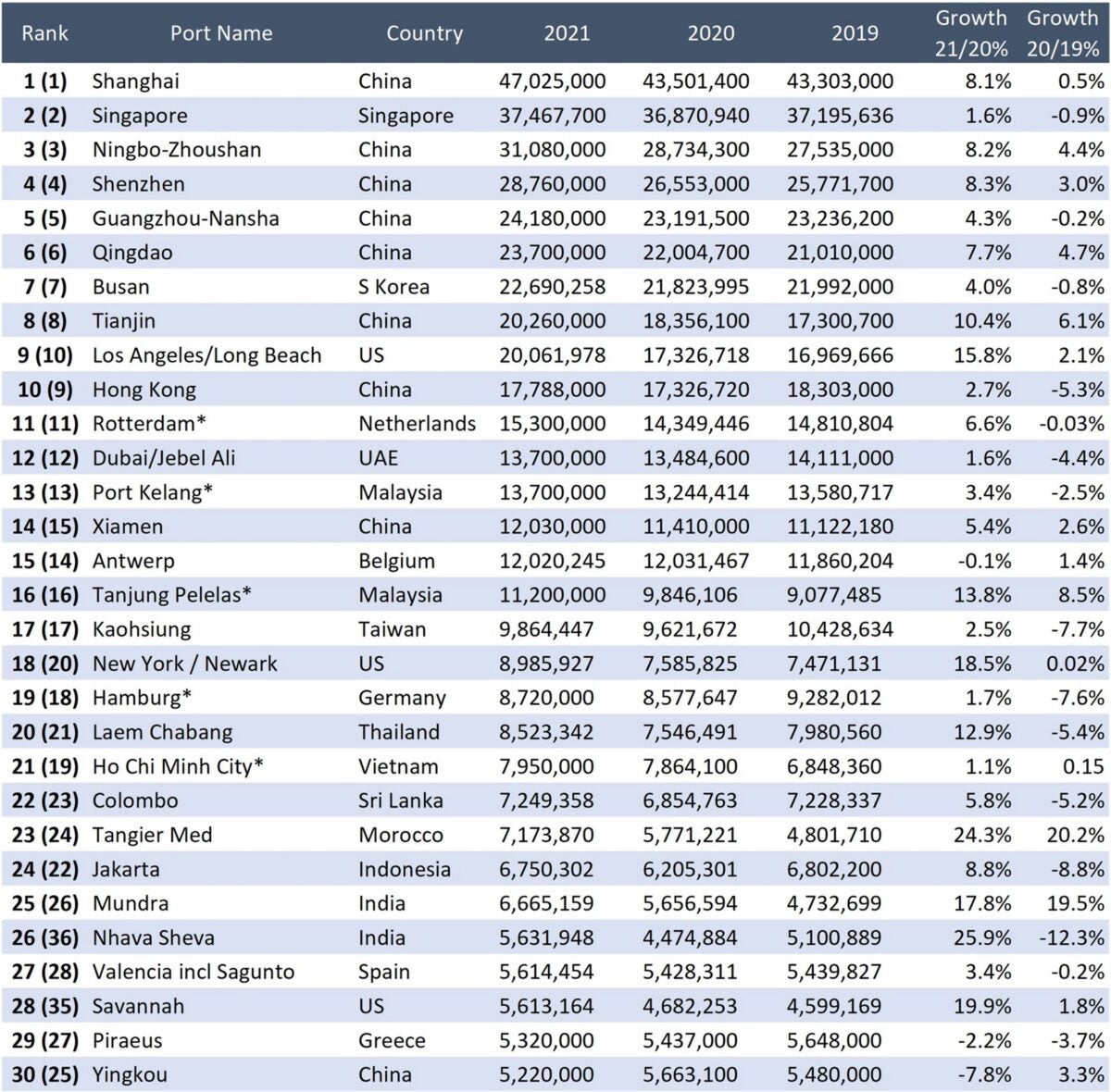China is the world’s largest exporter of containerized goods, produces eight of every 10 new containers, is the leading builder of container ships and operates the fourth-largest liner company. It should come as no surprise that China overwhelmingly dominates the global container port rankings — and with ocean trade now surging, that its port tally has reached a new peak.
Alphaliner published its annual rankings of the world’s top 30 container ports by volume last week. Of the top 10, nine are Asian, including seven in China: Shanghai, Ningbo-Zhoushan, Shenzhen, Guangzhou-Nansha, Qingdao, Tianjin and Hong Kong.
The top 30 ports handled 450 million twenty-foot equivalent units in 2021, up 6.5% year-on-year. In 2020, the first year of the pandemic, growth was just 0.6%.
Asian megaports, which long ago left their competition in the dust, accounted for 77% of last year’s top-30 total, with China alone handling almost half: 47%. Long-reigning champion Shanghai “continued to build its lead” and “has now opened up a gap of nearly 10 million TEUs on its nearest competitor, Singapore,” said Alphaliner.
Trailing far behind are ports in Europe, handling 12% of the top 30 ports’ volumes, the U.S. with 8% and the Middle East with 3%. The U.S. has three ports on the leaderboard: Los Angeles/Long Beach at No. 10, New York/New Jersey at No. 18 and Savannah, Georgia, at No. 28.
Comparing the latest rankings to those a half-decade ago reveals how the world’s largest ports have maintained their dominance over time.

Five years ago, Asia accounted for 78% of volumes at the top 30 ports and China 49% — essentially the same market shares they had last year, despite a trade war, lockdowns and port closures along the way.
The top 30 ports handled 377.8 million TEUs in 2016, equating to growth of 19% in the 2016-2021 period. That’s a compound growth rate of 3.6%, on par with normal annual growth in global port throughput, and in line with what’s expected for 2022 (Maersk predicts 2%-4%).
What brought the top 30 ports back up to the normal trend line was unusually high growth in 2021. According to Drewry, throughput increased 6.5% last year including all ports worldwide. That is the same growth level Alphaliner reported for the top 30 ports, and 2%-3% higher than usual.
Some gateways fared better than others last year, and there were some particularly big winners among the world’s largest ports. According to Alphaliner, throughput in Shanghai jumped 3.5 million TEUs or 8%; Los Angeles/Long Beach 2.7 million TEUs (16%); Ningbo-Zhoushan 2.3 million TEUs (8%); Shenzhen 2.2 million TEUs (8%); and Tianjin 1.9 million TEUs (10%).

Click for more articles by Greg Miller
Related articles:
- Supply chain signals: New-container prices and production finally peak
- Supply chain whack-a-mole: West Coast eases, East Coast worsens
- Glimmer of hope: Has the ship gridlock off ports finally peaked?
- Supply chain signals: New-container prices and production finally peak
- How China became the big winner of the COVID era
- How three Chinese companies cornered global container production







